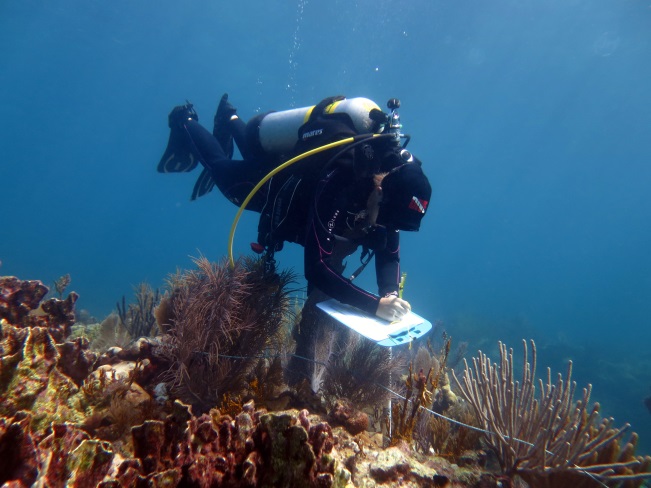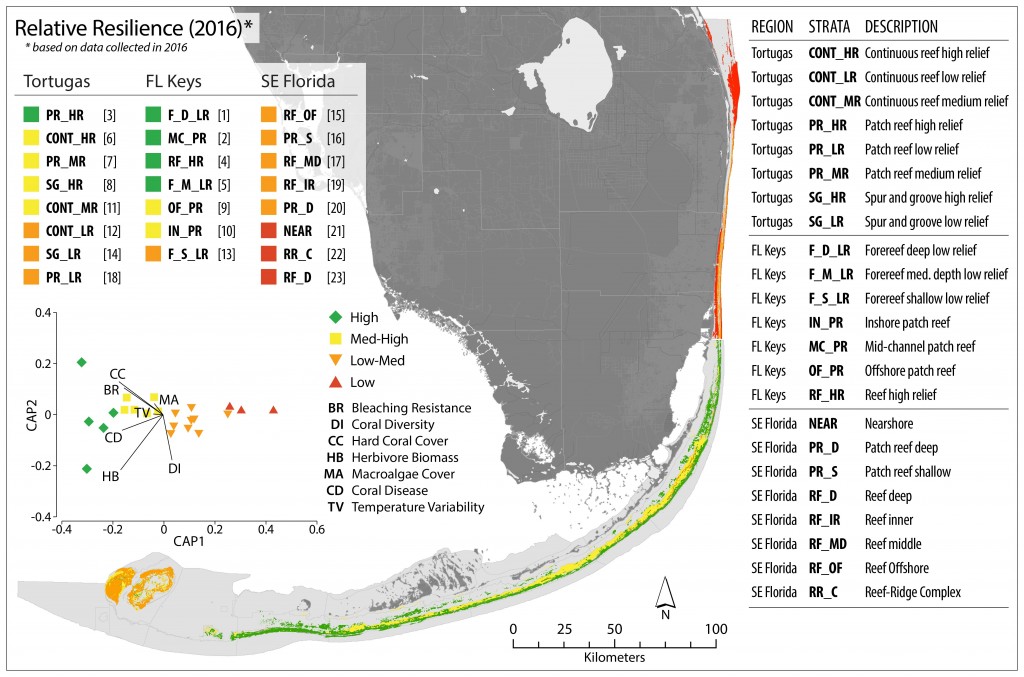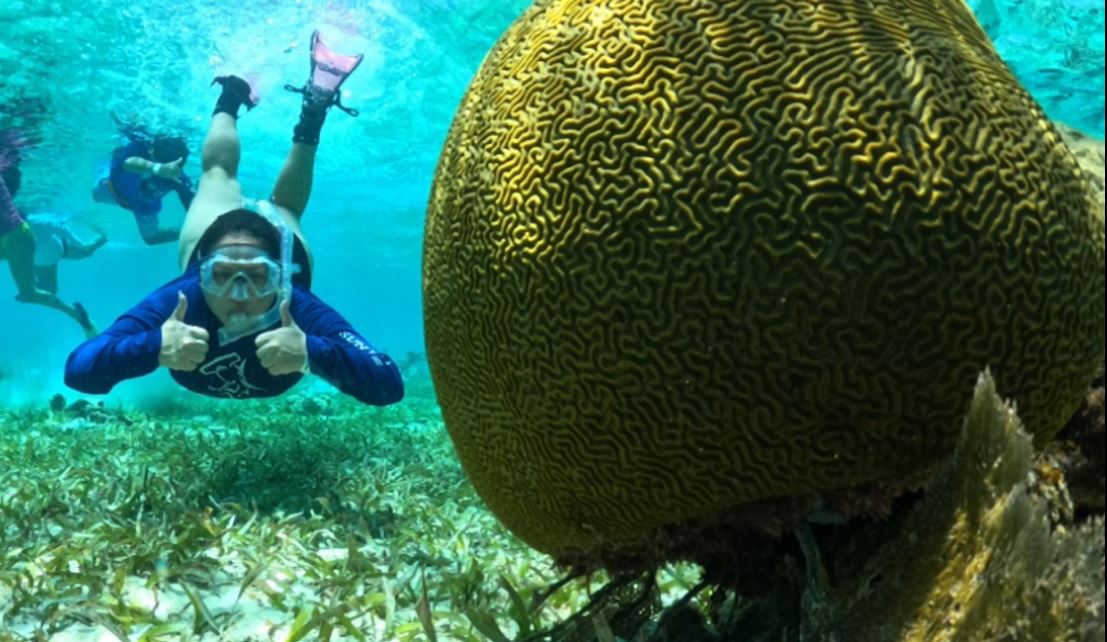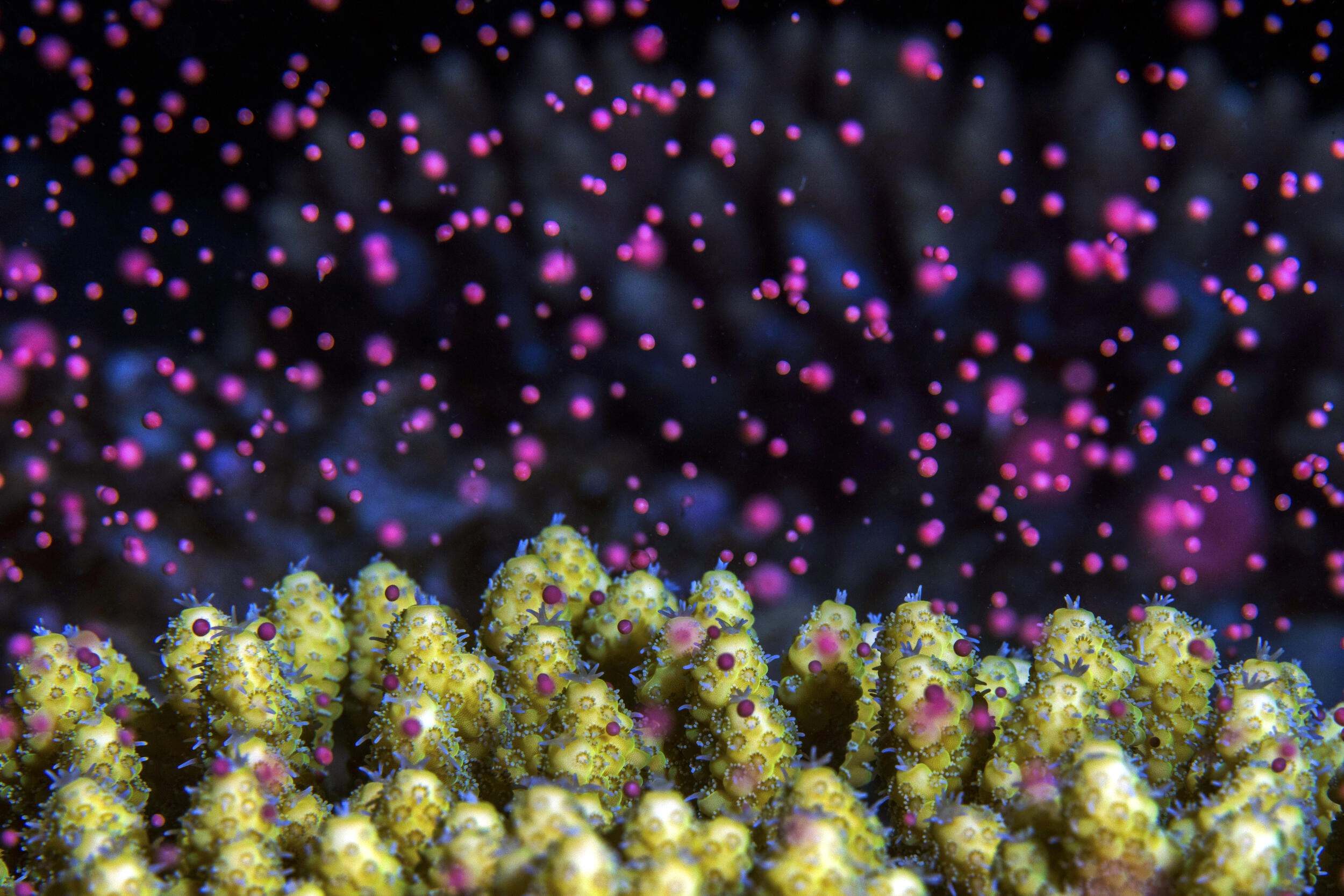Coral Reef Resilience to Climate Change in the Florida Reef Tract
Location
Florida Reef Tract, Florida, USA
The challenge
Climate change and a range of human activities threaten the natural resilience of coral reef ecosystems. Reef resilience is the ability to resist and recover from disturbances while retaining essentially the same function and structure. Managers can support the natural resilience of reefs by reducing their sensitivity to climate-related disturbances, such as coral bleaching, by reducing stress on reefs caused by human activities. Identifying resilient reef areas and better understanding their interaction with human stressors can help inform management strategies to better protect coral reefs in the future.
Southeast Florida’s coral reefs are located close to shore and co-exist with intensely urbanized areas. They are subject to impacts from a variety of natural and human stressors including, among others, coral bleaching and disease, invasive species, marine debris, land based sources of pollution, recreational and commercial misuse, and coastal construction. The challenge for natural resource managers in Florida, as with everywhere else reefs occur, lies in deciding which actions to implement and where, to best support resilience. Understanding spatial variation in resilience to climate change in the Florida Reef Tract was the goal of this project, with the aim being to produce information that can inform management decisions.
This project was a collaboration co-funded by NOAA’s Coral Reef Conservation Program, the Florida Department of Environmental Protection, and The Nature Conservancy’s Florida office. This project addresses this priority from Florida’s Climate Change Action Plan – Determine and map areas of high and low resilience to climate change in order to prioritize management efforts.
Actions taken
Data Collection & Analysis
In order to understand the spatial variation in resilience to climate change in the Florida Reef Tract, the following seven indicators were included in the assessment of relative resilience:
- coral cover
- macroalgae cover
- bleaching resistance
- coral diversity
- coral disease
- herbivore biomass
- temperature variability
Data used to develop these indicators come from field reef monitoring surveys (excepting temperature variability, which is remotely sensed) conducted in 2016 (no other years are included) as part of the National Coral Reef Monitoring Program and Florida Reef Resilience Program. Both monitoring programs use a stratified random sampling design whereby surveys are completed within all of the various habitat types and sub-regions of the Florida Reef Tract. A tutorial on analyzing relative resilience can be found here.

Collecting data. Photo © Jessica Keller
For this analysis, the data collected are summarized using weighted averages within ‘strata’, which combine habitat type and reef vertical complexity (i.e. ‘PR_HR’ Patch reef high relief in Tortugas). There are eight strata in Tortugas, seven in the Florida Keys (FL Keys) and eight in Southeast Florida (SE FL). A single value for each indicator is produced for each of these 23 strata. Indicator scores are then made uni-directional (high score is a good score), the scores are normalized to the maximum value to standardize scores to a 0-1 scale, and the scores are averaged and re-normalized to produce the final resilience scores. The strata are then ranked from highest to lowest score and classified as follows, based on the average (AVG) final resilience score (0.77) and standard deviation (SD) (0.16):
- High (>AVG+1SD)
- Med-high (>AVG & <AVG+1SD)
- Med-low (<AVG & >AVG-1SD)
- Low (<AVG-1SD)
Results
For the Florida Reef track sites, the average score for the ‘raw’ resilience scores was 0.5 and ranged from 0.31 to 0.65. The average of the normalized, final resilience scores was 0.77 and ranged from 0.31 to 0.65. The standard deviation around this average was 0.16. Relative resilience categories are set as:
- High (>AVG+1SD; >0.93)
- Med-high (>AVG & <AVG+1SD; >0.77&<0.93)
- Med-low (<AVG & >AVG-1SD; <0.77&>0.61)
- Low (<AVG-1SD; <0.61)

Figure 1. Relative resilience to climate change in the Florida Reef Tract, based on data collected in 2016. Rankings from highest to lowest relative resilience (1-23) are shown after strata codes top left, and descriptions for strata codes are right. Relative resilience is greatest in the FL Keys and lowest in SE Florida. Results of a canonical analysis of principal (CAP) coordinates are inset and show strong groupings among the relative categories in multivariate space. High resilience sites are strongly associated with high values for coral cover, bleaching resistance, and herbivore biomass and low levels of coral disease; the opposite is true for low resilience sites (from Maynard et al. 2017). Click to see larger image.
Among the 23 strata, there are 5 with relatively high resilience, 9 medium-high, 6 medium-low, and 3 with relatively low resilience (Figure 1). The Tortugas had 1 high, 4 med-high, and 3 med-low resilience strata. The FL Keys had 4 high, 2 med-high, and 1 med-low resilience strata. SE Florida had 5 med-low and 3 low resilience strata.
The strata with relatively high resilience are:
- F_D_LR [1] – Forereef deep low relief in FL Keys
- MC_PR [2] – Mid-channel patch reef in FL Keys
- PR_HR [3] – Patch reef high relief in Tortugas
- RF_HR [4] – Reef high relief in FL Keys
- F_M_LR [5] – Forereef mid-depth low relief in FL Keys
The strata with relatively low resilience are:
- NEAR [21] – Nearshore in SE Florida
- RR_C [22] – Reef-ridge complex in SE Florida
- RF_D [23] – Reef deep in SE Florida
Results of a multivariate statistical analysis (canonical analysis of principal coordinates) results indicate that high resilience sites generally had high values for herbivore biomass, coral diversity, coral cover and bleaching resistance; the opposite is true for sites with medium-low or low resilience (Figure 1). Results are shared within a project report as maps and show spatial variation in relative resilience, as well as spatial variation in each of the 7 resilience indicators included in the analysis.
How successful has it been?
A better understanding of the spatial variation in resilience to climate change in the Florida Reef Tract was gained, which can now be used to inform management decisions. The maps of areas of high and low resilience to climate change will help to prioritize management efforts and decide which actions to implement and where, to best support resilience.
The project was successful in that the planned analysis was completed and report written, and the results were shared with collaborating managers from the Florida Department of Environmental Protection and the Florida Keys National Marine Sanctuary.
Lessons learned and recommendations
Future research and communication activities recommended include:
- Compile past reef monitoring data to examine trends in resilience indicators and resilience over the last 10 years
- Examine spatial variation in the resilience of other (than stony corals) key habitat builders, such as barrel sponges, sea fans and soft corals
- Examine site-based data to review resilience at a higher-resolution than strata
- Produce fact sheets to educate senior policy and decision-makers on resilience concepts
- Use resilience information to predict survivorship of corals transplanted from nurseries
- Develop a dashboard that makes reef monitoring data and resilience summaries available as interactive maps to managers and the public
Funding summary
Funding for the project was provided by the Florida Department of Environmental Protection, the NOAA Coral Reef Conservation Program, and The Nature Conservancy
Lead organizations
SymbioSeas and the Marine Applied Research Center
Florida Department of Environmental Protection
The Nature Conservancy
NOAA Coral Reef Conservation Program
Partners
Florida Keys National Marine Sanctuary
University of Miami RSMAS
NOAA Atlantic and Oceanographic Meteorological Laboratory
Resources
Assessing and Monitoring Reef Resilience
Coral Reef Resilience to Climate Change in the Florida Reef Tract


